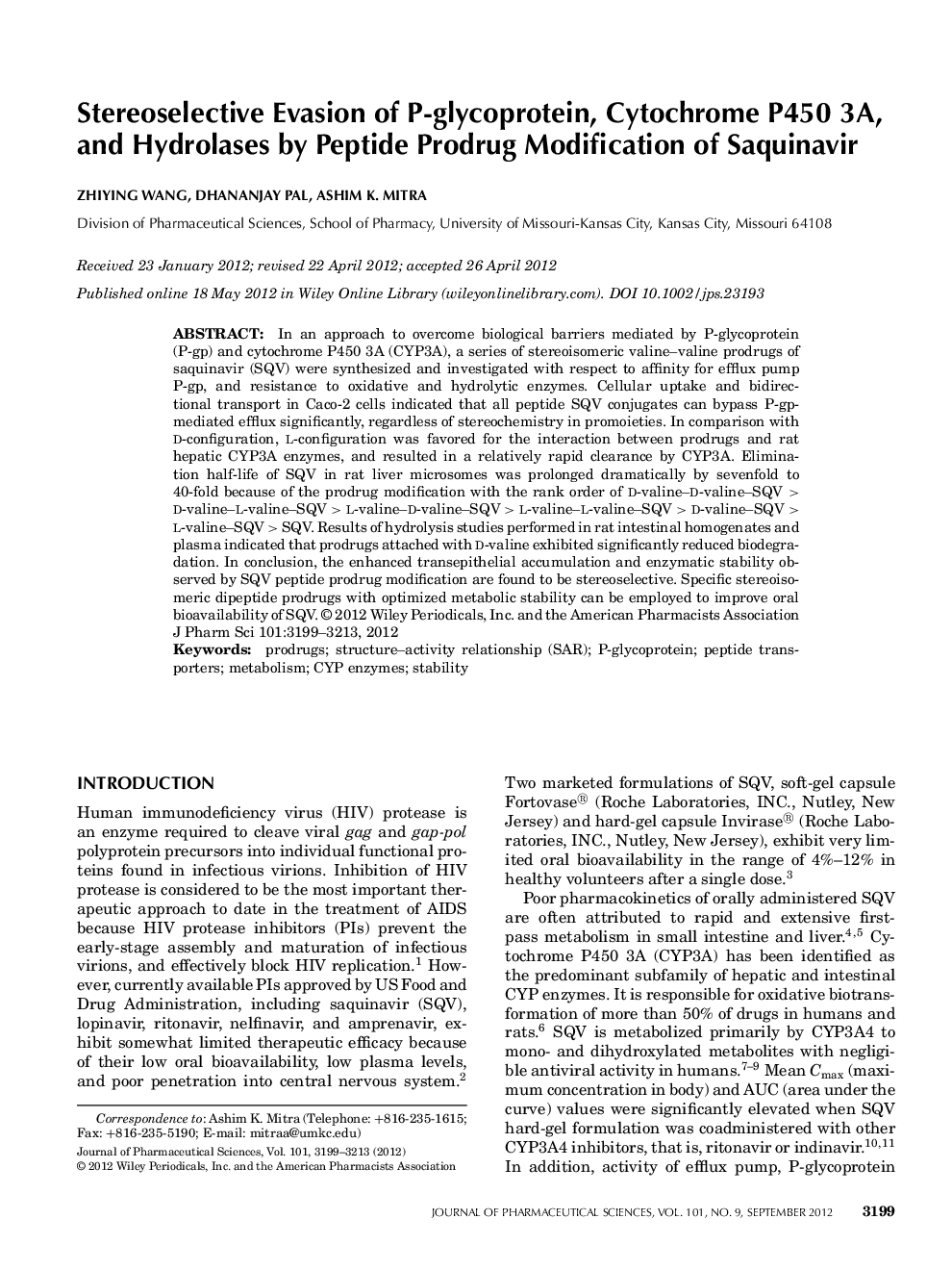| Article ID | Journal | Published Year | Pages | File Type |
|---|---|---|---|---|
| 2485943 | Journal of Pharmaceutical Sciences | 2012 | 15 Pages |
ABSTRACT:In an approach to overcome biological barriers mediated by P-glycoprotein (P-gp) and cytochrome P450 3A (CYP3A), a series of stereoisomeric valine–valine prodrugs of saquinavir (SQV) were synthesized and investigated with respect to affinity for efflux pump P-gp, and resistance to oxidative and hydrolytic enzymes. Cellular uptake and bidirectional transport in Caco-2 cells indicated that all peptide SQV conjugates can bypass P-gp-mediated efflux significantly, regardless of stereochemistry in promoieties. In comparison with d-configuration, l-configuration was favored for the interaction between prodrugs and rat hepatic CYP3A enzymes, and resulted in a relatively rapid clearance by CYP3A. Elimination half-life of SQV in rat liver microsomes was prolonged dramatically by sevenfold to 40-fold because of the prodrug modification with the rank order of d-valine–d-valine–SQV > d-valine–l-valine–SQV > l-valine–d-valine–SQV > l-valine–l-valine–SQV > d-valine–SQV > l-valine–SQV > SQV. Results of hydrolysis studies performed in rat intestinal homogenates and plasma indicated that prodrugs attached with d-valine exhibited significantly reduced biodegradation. In conclusion, the enhanced transepithelial accumulation and enzymatic stability observed by SQV peptide prodrug modification are found to be stereoselective. Specific stereoisomeric dipeptide prodrugs with optimized metabolic stability can be employed to improve oral bioavailability of SQV. © 2012 Wiley Periodicals, Inc. and the American Pharmacists Association J Pharm Sci 101:3199–3213, 201
